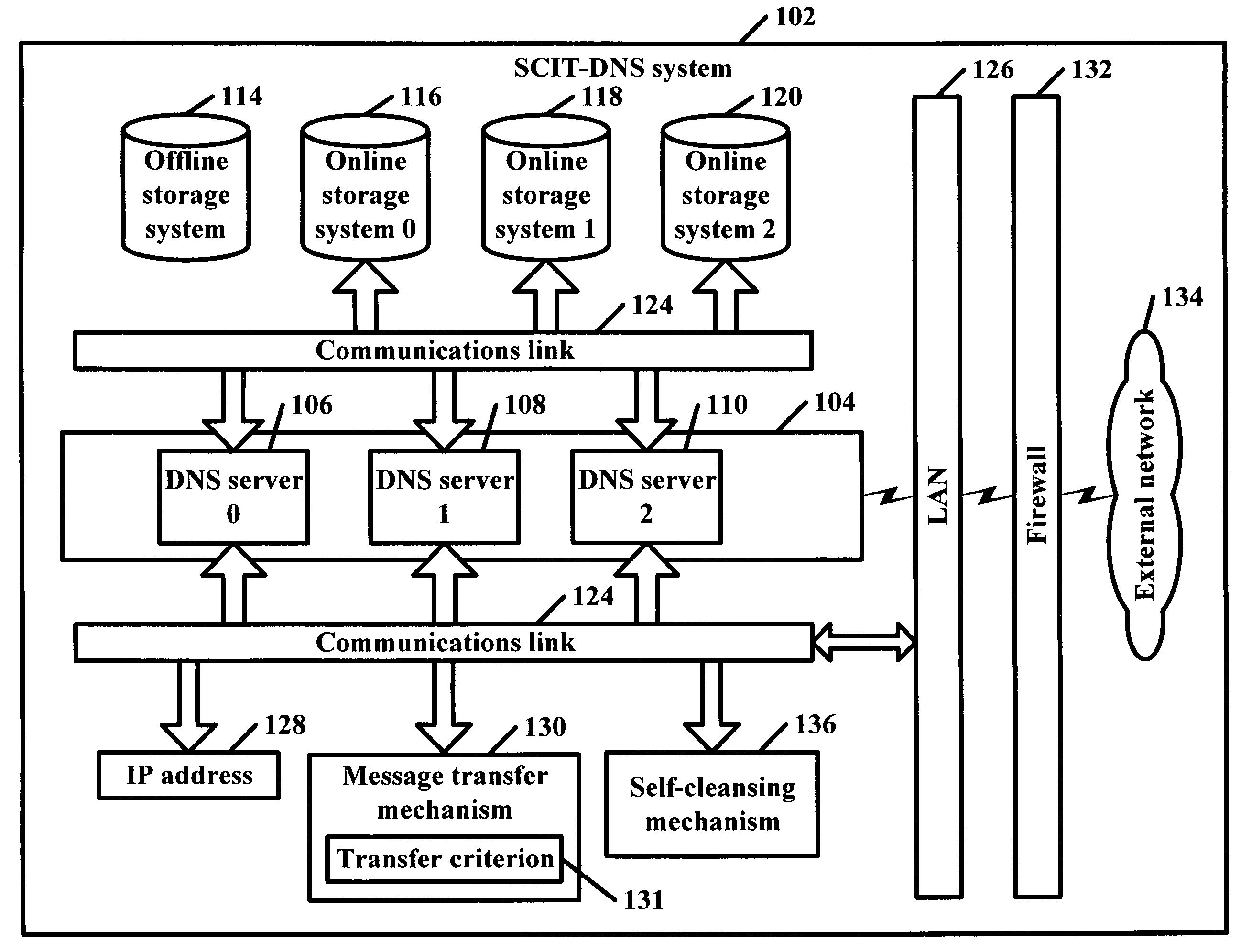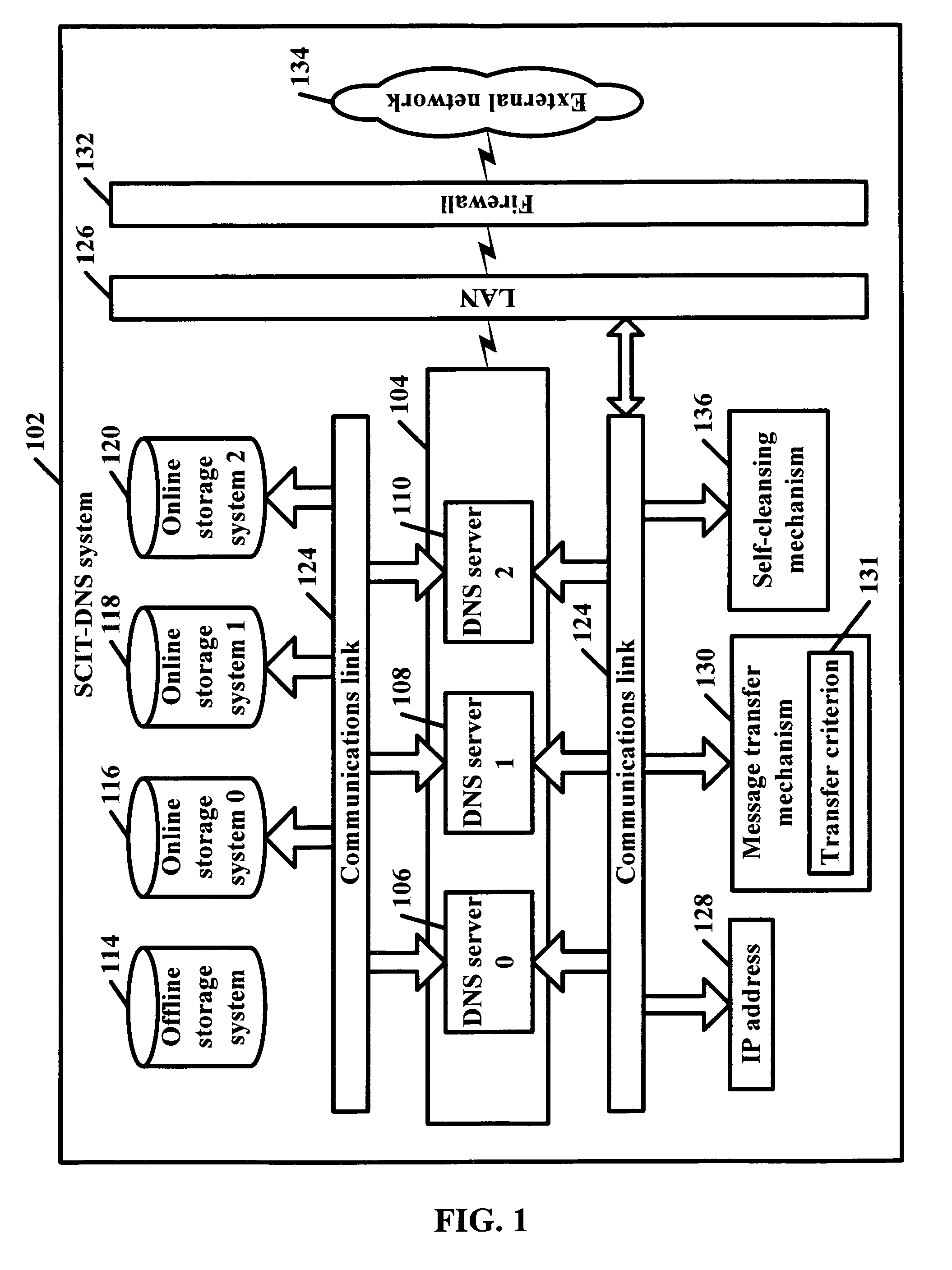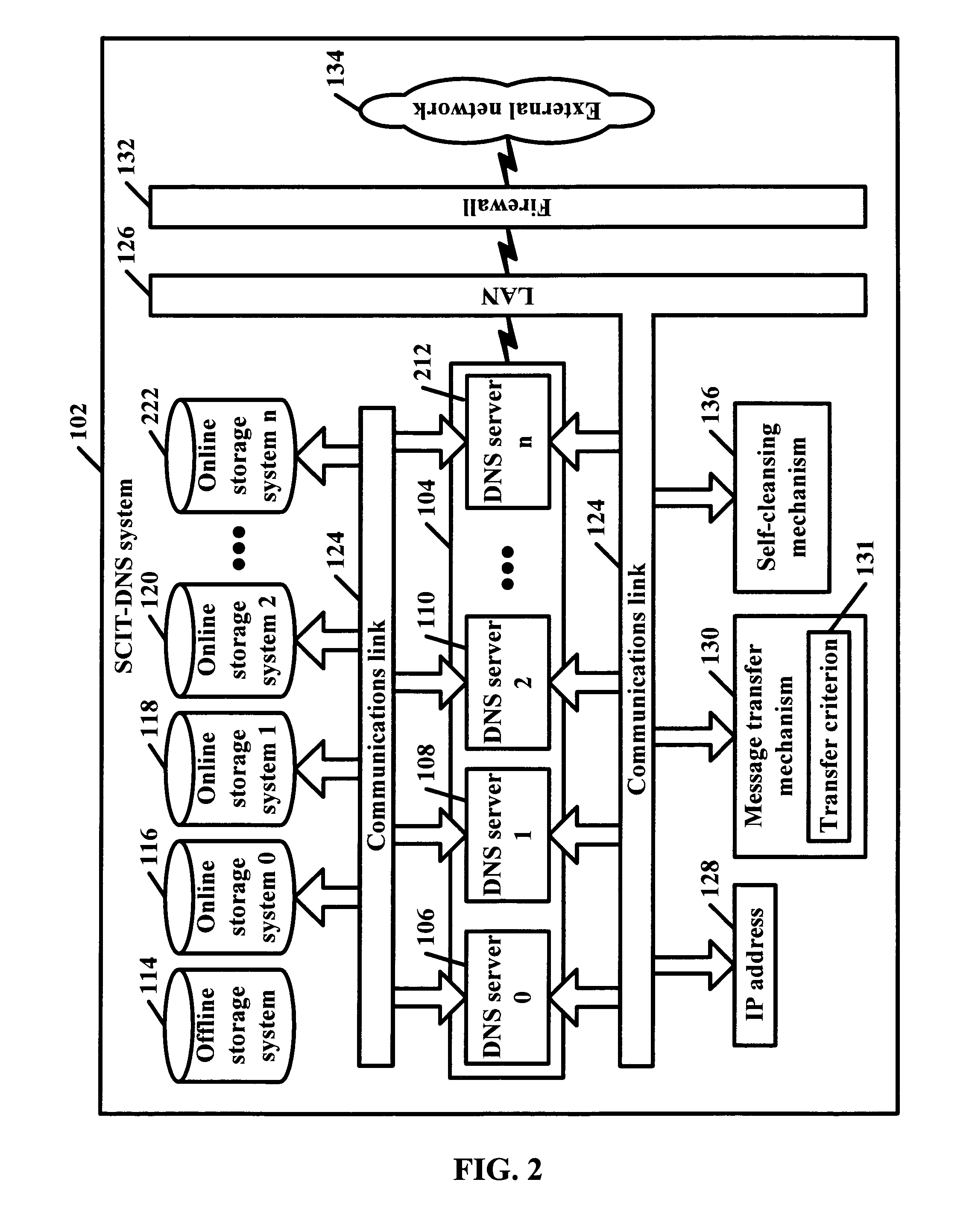SCIT-DNS: critical infrastructure protection through secure DNS server dynamic updates
a technology of dynamic updates and critical infrastructure, applied in the field of scitdns, can solve the problems of not being involved in maintaining the master file, not being able to procure the private key, and being known to target popular dns implementations,
- Summary
- Abstract
- Description
- Claims
- Application Information
AI Technical Summary
Benefits of technology
Problems solved by technology
Method used
Image
Examples
Embodiment Construction
[0034]The present invention is a secure framework of DNS servers that uses an approach called Self-Cleansing Intrusion Tolerance (SCIT). The framework may be based on at least one server or at least one cluster of servers, either of which can constantly rotate the role of individual servers. The framework can handle one-server failures, confine damages of successful intrusion and digitally sign dynamic updates by a clean server using a DNS zone key while keeping the key offline at all times.
[0035]SCIT is a system that uses alternating subsystems. A subsystem, such as a server, may be periodically assumed to have “failed,” namely compromised by undetected intrusion. Thus, the “failed” server may be brought offline for cleansing and integrity checking.
[0036]SCIT uses a cluster of servers and can constantly rotate the role of each server. At any point in time, a particular server may be the primary server, the secondary server, or be in the process of rebooting (sometimes referred to h...
PUM
 Login to View More
Login to View More Abstract
Description
Claims
Application Information
 Login to View More
Login to View More - R&D
- Intellectual Property
- Life Sciences
- Materials
- Tech Scout
- Unparalleled Data Quality
- Higher Quality Content
- 60% Fewer Hallucinations
Browse by: Latest US Patents, China's latest patents, Technical Efficacy Thesaurus, Application Domain, Technology Topic, Popular Technical Reports.
© 2025 PatSnap. All rights reserved.Legal|Privacy policy|Modern Slavery Act Transparency Statement|Sitemap|About US| Contact US: help@patsnap.com



